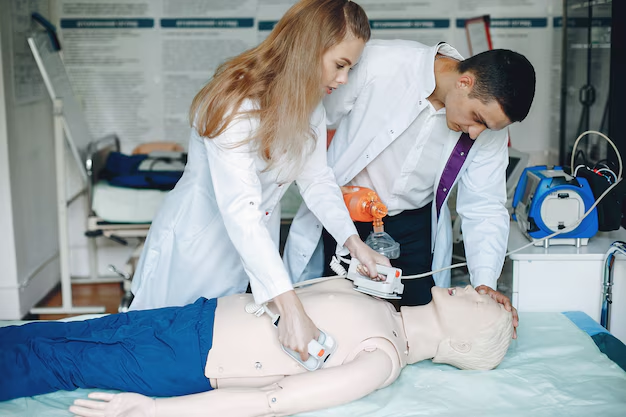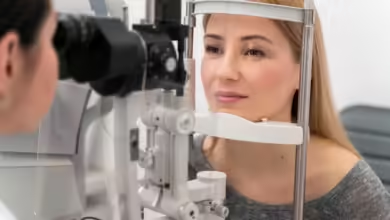Defibrillators: Understanding Shock Capacity in 2024

Defibrillators are life-saving devices used to restore a ordinary heartbeat by using handing over an electric powered shock to the coronary heart. In 2024, improvements in era have led to greater green and user-friendly defibrillators. But a commonplace question stays: How many shocks can a defibrillator deliver? This article delves into the information of defibrillator surprise capacity and how it affects their functionality.
What is a Defibrillator?
A defibrillator is a medical device that offers a dose of electrical cutting-edge (often referred to as a counter-shock) to the coronary heart. Its primary feature is to treat existence-threatening cardiac arrhythmias, in particular ventricular fibrillation and pulseless ventricular tachycardia.
Types of Defibrillators
Automated External Defibrillators (AEDs)
Implantable Cardioverter Defibrillators (ICDs)
Wearable Cardioverter Defibrillators (WCDs)
Manual Defibrillators
How Do Defibrillators Work?
Defibrillators work by means of handing over a controlled electric surprise to the heart, which depolarizes the heart muscle tissue and allows the herbal pacemaker to re-set up a everyday rhythm.
Shock Capacity in Modern Defibrillators (2024)
The wide variety of shocks a defibrillator can supply relies upon at the type of tool and its battery lifestyles.
AEDs: Typically, AEDs are designed to supply a hundred and fifty-two hundred shocks on a fully charged battery. However, most emergencies are resolved inside the first few shocks.
ICDs: These gadgets, implanted in patients, can deliver numerous hundred shocks over the lifespan of the battery, usually lasting five-7 years.
WCDs: Wearable defibrillators can supply about 30-50 shocks earlier than the battery needs to be recharged.
Manual Defibrillators: Used through healthcare professionals, those can deliver as many shocks as wished as long as they may be related to a strength source or have a charged battery.
Factors Influencing Shock Capacity
Battery Life: The number one component figuring out the number of shocks is the battery’s capability. Most present day defibrillators use lithium-ion batteries.
Device Usage: Frequent use or trying out can lessen the overall wide variety of shocks a defibrillator can deliver.
Maintenance and Care: Regular upkeep guarantees the device is continually ready to deliver the most number of shocks.
Importance of Shock Capacity in Emergency Situations
In emergency conditions, the potential to deliver more than one shocks may be vital, particularly in extended resuscitation efforts.
Battery Replacement and Recharging
Most defibrillators will alert the user when the battery is low. Replacing or recharging the battery guarantees the tool stays operational.
Future Trends in Defibrillator Technology
With ongoing advancements, destiny defibrillators may function even longer battery existence, greater green shock transport, and improved consumer interfaces.
Safety Precautions When Using a Defibrillator
Ensure the device is nicely maintained.
Follow the producer’s guidelines for battery alternative and charging.
Regularly take a look at the device’s readiness indicators.
Training and Proper Use
Proper schooling is important for all of us who may additionally want to use a defibrillator, making sure that the tool is used correctly in an emergency.
How Many Shocks Are Typically Needed?
Most cardiac arrest cases require only 1-3 shocks to restore a normal rhythm. However, the capability to supply extra shocks is critical for ongoing emergencies.
Comparing Shock Capacities: AED vs. ICD
AEDs are greater for immediate, public get admission to, with sufficient shocks for maximum emergencies.
ICDs, being implantable, have an extended-time period shock potential for ongoing affected person safety.
What to Do if the Defibrillator Fails?
In rare cases wherein a defibrillator fails to supply a shock, maintain CPR and follow emergency protocols till expert assist arrives.
Cost and Accessibility
The value of defibrillators varies by type, with AEDs being the maximum accessible. Public get admission to to AEDs is growing globally, enhancing survival fees from sudden cardiac arrest.
Conclusion
Defibrillators are more dependable and efficient than ever before, with surprise capacities tailor-made to their specific use cases. Whether it is an AED in a public region or an ICD implanted in a patient, know-how the surprise capacity of these gadgets is essential for ensuring they are able to perform when needed maximum.
FAQs
How many shocks can an AED supply on a full price?
An AED can normally deliver between a hundred and fifty-two hundred shocks on a fully charged battery.
What takes place if a defibrillator battery dies at some stage in an emergency?
If the battery dies, CPR should be persevered, and every other defibrillator must be used if to be had.
Are there any improvements expected in defibrillator era?
Future advancements can also consist of longer battery existence, quicker charging instances, and greater intuitive user interfaces.



